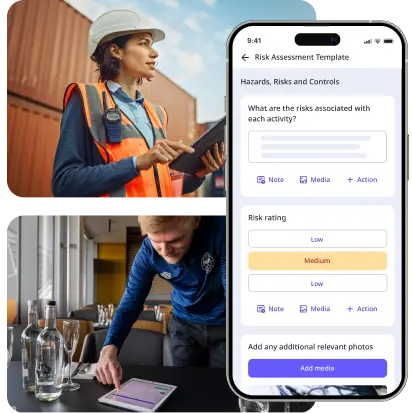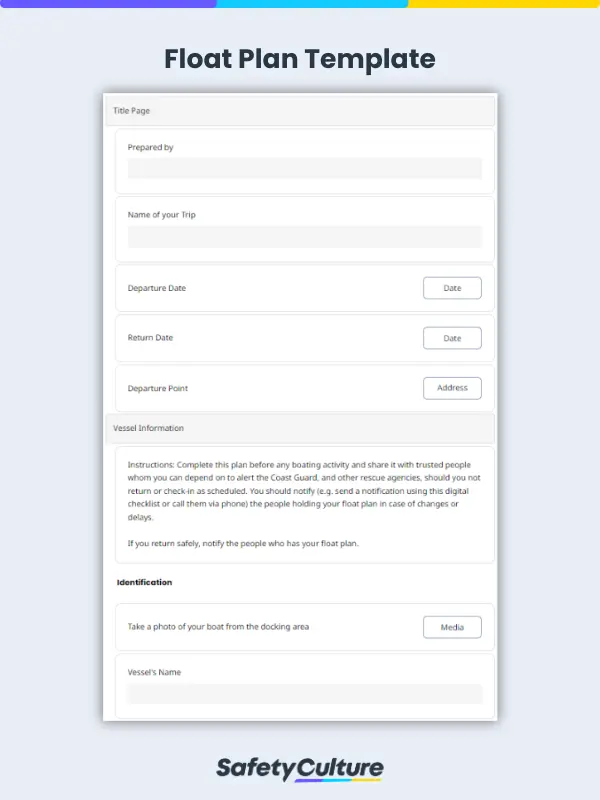What is a Float Plan?
A float plan summarizes a boat’s journey and details vital information, such as boat description, passenger and crew list, safety equipment available, and planned route. It should be filed by a boater (e.g. kayaker, canoer, skipper of a family cruiser) before a trip and shared with an assigned person/s who can alert the Coast Guard in case of emergency. A float plan can save the Coast Guard and other rescuing agencies precious time and effort during search and rescue, increasing the chances of survival for those in distress.
What Should Be Included in a Float Plan?
A float plan should be able to provide complete, pertinent information that can guide rescuers in quickly locating a boat and its passengers in distress. Here are the key headings that should be included in a float plan:
- Vessel information – Indicate the name of the boat, its type, size, color, year, make, unique features, communication equipment, engine, propulsion, and registration details. These can help rescuers recognize a boat and communicate with the crew faster.
- Details of people onboard – Important information about the people onboard, including the operator/skipper, crew, and passengers, should be manifested in a float plan. This can include an operator’s personal communication device (e.g., personal locator beacon, marine radio) identifiers and the crew/passengers’ emergency contact details. Rescuers can use this information to contact those onboard and also alert their loved ones about the search operations.
- Itinerary – Provide a rundown of the boat’s expected route, including stopovers (if any), and the planned schedule of departure/s and arrival/s. This knowledge can aid rescuers in tracing a boat’s journey in absence of operational communication methods. It can also be useful to provide a map image for easier visual reference.
- Availability of safety equipment – The float plan also serves as a good assessment tool for a boat’s emergency preparedness. This section helps boaters verify if there is a sufficient supply of safety equipment (e.g. personal flotation device and visual distress signals) that can help in giving out distress signals.
- List of people entrusted with Float Plan – Filing a float plan becomes pointless if it is not shared with one or several people not onboard the boat. Their names and contact details are included so that they can be updated by the boater if they have departed the port and have safely returned; or if they encounter sudden changes in the itinerary.
3 Cases Where a Float Plan Saved Lives
In the past, float plans have proven to be key puzzle pieces in search and rescue operations. Take a brief look at these three incidents demonstrating why float plans should never be skipped:
- Rescued Kayakers in Alaska
A group of four kayakers left a float plan with a friend saying they would leave Lowell Point, Alaska on a Friday morning then paddle to Bear Glacier and return early Sunday afternoon. The group had not yet returned by 8:50pm, prompting their friend to alert the Coast Guard. Thanks to the float plan, the Coast Guard found the kayakers safe in Thumb Cove the following day. It appeared that the group was just waiting for winds to subside before returning to Lowell Point. - Mississippi Boaters Saved During a Stormy Night
A Coast Guard rescue helicopter came to the aid of two boaters whose 12-foot skiff capsized. The rescue team were able to locate the boaters as they left a float plan with a family member, who responsibly alerted the Coast Guard when the boaters were overdue. The boaters were found safe in the wetlands, hoisted onto a helicopter, and brought to a hospital for evaluation. - Coming to the Aid of Fishermen in Georgia
Two fishermen were rescued by the Coast Guard after their 17-foot boat capsized in Brunswick, Georgia. Because one of the fishermen left a float plan with his wife, she was able to quickly alert the police when they did not return as scheduled. This led to a quick search-and-rescue operation that saved the fishermen.



